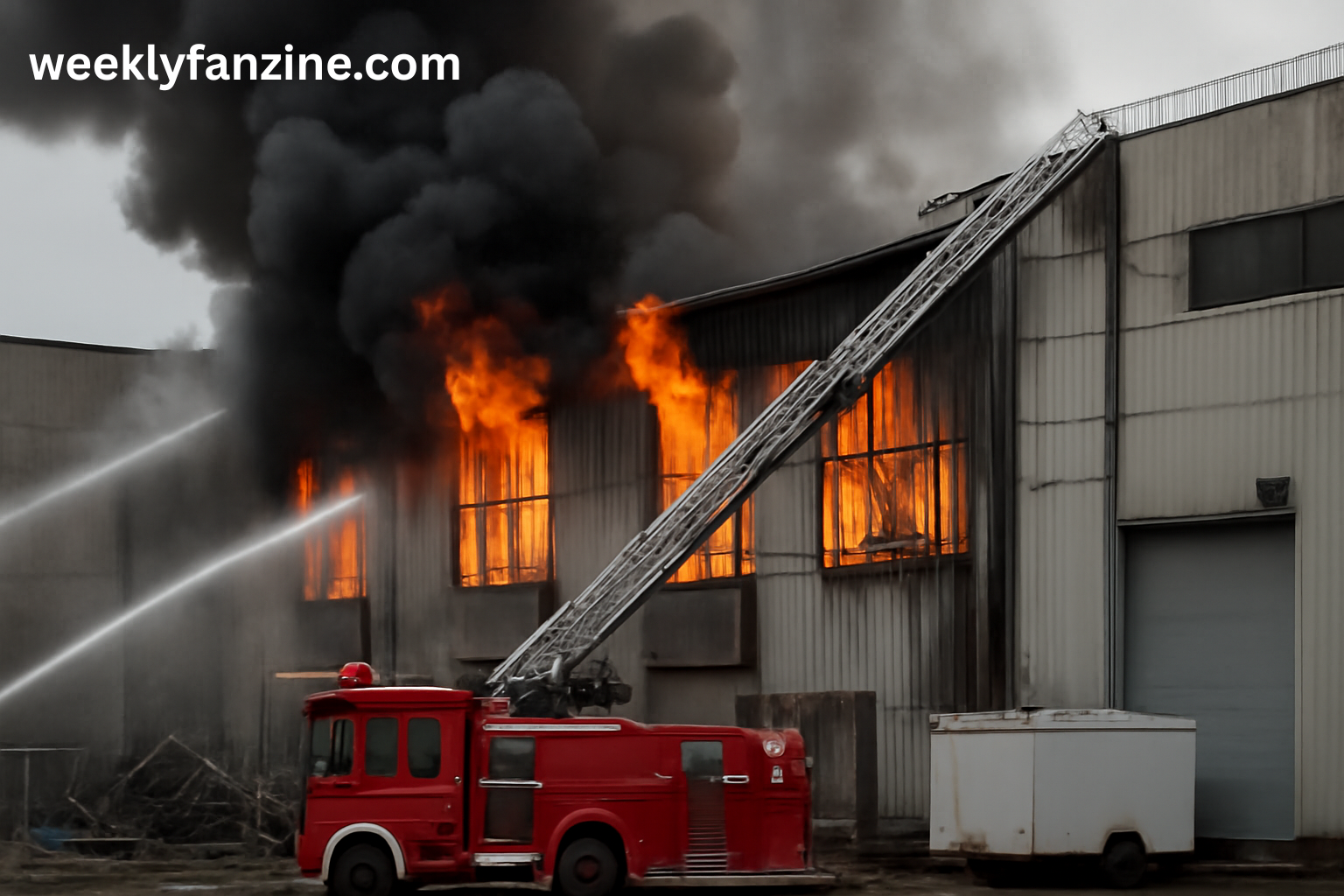Introduction to the New Berlin Industrial Accident
The New Berlin Industrial Accident refers to a significant event that took place in the industrial sector of New Berlin, a city known for its manufacturing and commercial importance. This accident, involving a large-scale industrial operation, raised questions about safety protocols, regulatory oversight, and emergency response measures. Although many industrial accidents are marked by negligence, human error, or unforeseen circumstances, the New Berlin Industrial Accident stands out due to its magnitude and the consequences it had on both the local community and the broader industry.
In this blog post, we will delve into the details of the incident, exploring the causes, the impact on the local community, the response from authorities, and the measures taken to prevent similar events in the future. Our goal is to provide a comprehensive and objective look at the New Berlin Industrial Accident, its aftermath, and the lessons learned.
The Incident
The New Berlin Industrial Accident occurred on a day like any other, at a local manufacturing plant that specialized in producing industrial goods. The facility had been in operation for several years, and it had a solid reputation for its ability to meet deadlines and maintain a consistent production rate. However, as with many such facilities, there were a number of factors at play that contributed to what would become a catastrophic failure.
While the specifics of the incident are still being analyzed, it is known that the accident involved the malfunction of a critical piece of equipment. This malfunction triggered a chain reaction that led to an explosion within the facility. The explosion resulted in significant damage to the plant and caused multiple fires to break out. As a result, several workers were injured, some seriously, and the surrounding environment was severely affected by the release of toxic fumes and hazardous materials.
Immediate Response and Emergency Action
Once the explosion occurred, the plant’s emergency protocols were put into action. Emergency response teams from the facility, local fire departments, and medical units were quickly dispatched to the scene. The initial priority was to contain the fire and prevent it from spreading further. Firefighters worked tirelessly, battling the flames and dealing with hazardous chemicals that had been released into the air.
Meanwhile, paramedics and emergency medical teams provided immediate care to the injured. Many workers were taken to nearby hospitals, some with severe burns and other life-threatening injuries. Others were treated at the scene for minor injuries before being sent to medical facilities for further evaluation. The scale of the incident required significant coordination between emergency teams, local authorities, and medical professionals to address the immediate needs of those affected.
Once the immediate threat was under control, the plant was evacuated, and safety teams were deployed to assess the extent of the damage. The release of toxic chemicals and gases was a major concern, as it posed a threat not only to the plant’s workers but also to the surrounding communities. Environmental safety agencies were called in to monitor air and water quality, and to take appropriate action to prevent long-term contamination.
Investigation into the Causes of the Accident
The investigation into the New Berlin Industrial Accident was thorough and multifaceted. Officials from various agencies, including OSHA (Occupational Safety and Health Administration), the Environmental Protection Agency (EPA), and local law enforcement, began looking into the cause of the explosion. Initial reports suggested that the incident was caused by a malfunction in a piece of industrial equipment, which was identified as a key failure point in the system.
As the investigation continued, it was revealed that the equipment in question had been improperly maintained. There had been warnings from employees about potential malfunctions, but those concerns had not been adequately addressed. Additionally, some safety protocols were found to be lacking, including insufficient training for workers to handle emergency situations and a failure to properly inspect and maintain critical machinery. The plant’s management faced criticism for their oversight and their failure to prioritize safety.
The investigation also uncovered that the facility had a history of safety violations, some of which had been noted in previous inspections. However, these violations had not been acted upon in a timely manner, and the necessary corrective measures were not taken. The cumulative result of these factors created the conditions for the industrial accident to occur.
The Impact on the Community
The New Berlin Industrial Accident had far-reaching effects on the local community. In addition to the physical damage to the plant, which led to a temporary shutdown of operations, the environmental impact was significant. Toxic chemicals were released into the air, and nearby water sources were contaminated. While the full extent of the contamination was not immediately known, there were concerns about long-term health effects on residents living near the plant.
Public health officials closely monitored the air quality in the area, and advisories were issued for local residents to stay indoors until the situation was under control. Many local businesses were forced to temporarily close due to safety concerns, and schools in the area were also impacted. The local economy took a hit as workers were displaced and businesses in the vicinity experienced disruptions.
On a personal level, the community came together to support the victims of the accident. Local organizations and volunteers provided assistance to those affected by the disaster. Fundraisers were organized to help the families of those injured, and the community provided emotional and financial support to help those affected rebuild their lives.
Legal and Regulatory Responses
In the aftermath of the New Berlin Industrial Accident, there were significant legal and regulatory responses aimed at preventing similar incidents from occurring in the future. The plant’s management faced multiple lawsuits from workers and their families, as well as from local residents who had been affected by the contamination. The lawsuits focused on issues of negligence, inadequate safety measures, and failure to maintain the equipment properly.
From a regulatory perspective, the accident prompted a review of industrial safety standards, particularly in the manufacturing sector. Local and federal authorities called for stricter enforcement of safety regulations, and there was renewed emphasis on worker training, safety equipment, and the proper maintenance of industrial machinery. It became clear that the current regulatory framework was not enough to prevent such a disaster, and changes were necessary to ensure that industrial accidents like the New Berlin event did not happen again.
In response to the accident, the Occupational Safety and Health Administration (OSHA) imposed fines on the plant and its management for violating safety standards. Additionally, the company was required to implement a series of corrective actions to address the identified safety failures. This included upgrading safety equipment, conducting more frequent safety inspections, and establishing clearer emergency response protocols. In some cases, key personnel within the company were held accountable for their role in the accident.
The Road to Recovery
Recovery from the New Berlin Industrial Accident was a lengthy and challenging process. For the workers who were injured, the physical and emotional toll of the incident was immense. Many required months of medical treatment, rehabilitation, and counseling to cope with their injuries. Some workers faced permanent disabilities as a result of the explosion, and their lives were forever changed.
The plant itself was also in the process of recovery. After months of repairs, safety upgrades, and environmental cleanup, the facility was able to resume operations, albeit at a reduced capacity. The company worked to regain the trust of both its workers and the community, and steps were taken to ensure that the plant would never again be the site of such a devastating accident.
For the local community, recovery was also a long-term endeavor. Efforts were made to clean up the environment, monitor public health, and rebuild businesses that had been affected by the incident. The experience left a lasting impact on everyone involved, but it also led to positive changes in safety regulations, worker protections, and environmental safeguards.
Lessons Learned and Moving Forward
The New Berlin Industrial Accident served as a stark reminder of the importance of workplace safety, proper maintenance, and regulatory oversight. Several key lessons emerged from the incident:
- The importance of regular equipment maintenance: Regular inspections and maintenance of industrial machinery are essential to preventing accidents. Companies must prioritize the upkeep of their equipment and respond promptly to any concerns raised by employees.
- The need for comprehensive safety protocols: Safety protocols must be comprehensive, well-communicated, and enforced consistently. Employees must be adequately trained to handle emergencies, and safety measures must be updated regularly to reflect current risks.
- Stricter regulatory oversight: Government agencies must ensure that safety regulations are not only in place but also rigorously enforced. Compliance with safety standards should be a top priority for all industrial operations.
- A culture of safety: Ultimately, the success of safety programs depends on the culture within the workplace. Management must foster a culture of safety that encourages workers to report hazards and actively participate in maintaining a safe work environment.
Conclusion
The New Berlin Industrial Accident was a devastating event that left its mark on both the local community and the industrial sector. While the incident was tragic, it also provided valuable insights into the importance of safety, regulation, and proactive risk management. By learning from this incident and implementing stronger safeguards, industrial facilities can help prevent future accidents and protect the lives of workers and the surrounding communities.


